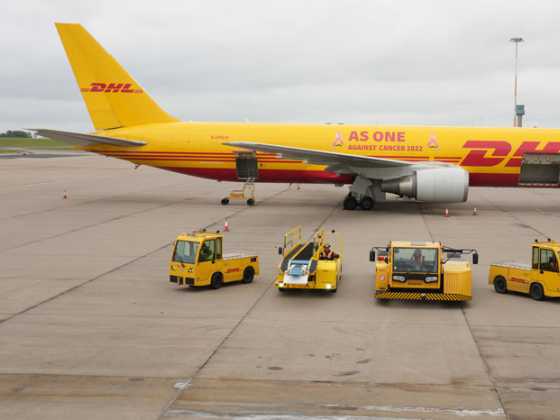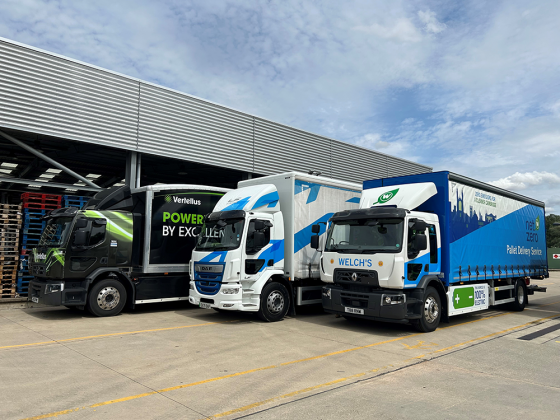A route for vans on the Road to Zero

LowCVP and Cenex have published a new Low Emission Van Guide, which provides a comprehensive backdrop to the policy environment affecting van operators, and focuses on operational, financial and environmental considerations
Even if you’re not in the business, you’ll likely have noticed the increase in the number of vans buzzing about our towns and cities in recent years. In fact, the total number of vans licensed to operate in the UK has grown by a quarter in ten years to 4.1 million vehicles so cleaning up their emissions – which now represent about 33 per cent of all oxides of nitrogen and over 15 per cent of the CO2 emissions from all road transport – has become an increasingly important focus for policy.
Recent developments have made action on climate change even more urgent from the perspective of policy makers; the Extinction Rebellion protests in London and elsewhere and the international ‘school strikes’ resulted in the UK Government recently declaring a cross-party supported ‘Climate and Environment Emergency’.
The Committee on Climate Change’s ‘Net Zero’ report added to the pressure, advising the government that rather than achieving an 80 per cent reduction in greenhouse gas emissions (on 1990 levels) by 2050 a 100 per cent ‘Net Zero’ overall cut is necessary. While the CCC leaves the detailed policy prescriptions to policy makers in government, it did suggest that the targets will require rapid electrification of the vehicle fleet and that the current 2040 ‘deadline’ for the ending of sales of ICE-powered cars and vans is too late. The CCC suggests a 2035 or even 2030 target is needed.
The government is currently digesting these calls but is sure to be feeling the pressure to step up action in this area. The calls for added urgency on the climate change front are strengthened by ongoing entreaties to improve the air quality in areas of high pollution, mostly cities, to reduce the impacts on human health.
The government has already lost two court cases, brought by the NGO Client Earth, for the failure to meet European targets for air quality. Vans, which operate disproportionately in urban areas, are a significant contributor to polluting emissions too.
The introduction of London’s ULEZ and other clean air zones due to follow in other cities in the next year or two, this all adds to the impetus for fleet managers to consider low and zero emission vehicle options.
The latest vehicle technologies can tick both air quality and climate ‘boxes’. Reducing emissions of both types often makes business sense as lower carbon vehicles – being more efficient/better mpg – can be cheaper to run as well as cutting operating costs by enabling access to the ULEZ and future CAZs, in addition to other access rights and tax benefits which are likely to be strengthened.
The Low Emission Van Guide
Focusing specifically on the growing van sector, the LowCVP and Cenex have published a new Low Emission Van Guide which aims to help van operators reduce both costs and emissions. The Guide provides a comprehensive backdrop to the policy environment affecting van operators, then focusing on operational, financial and environmental considerations. The Guide provides details of the long listof grants and incentives to operators to make low emissions vehicle choices.
For operator, these include plug-in van grants for operators (up to £20k); EV homecharge and workplace charging schemes; the on-street residential chargepoint scheme; Vehicle Excise Duty and fuelduty; enhanced capital allowances; free or discounted parking; no London Congestion Charge; and Clean Air Zones compliant (including ULEZ). London also has a van scrappage scheme that can be utilised. Drivers meanwhile can benefit from the van benefit charge and van fuel benefit charge.
In addition, to compensate for the fact that some alternatively-fuelled vehicles can have a higher kerb weight than their conventionally- fuelled counterparts, DfT has raised the weight limit for Category B driving licence holders (with a little training) to 4.25 tonnes (from 3.5 tonnes) to ensure that buyers of alternatively- fuelled vans can still carry the load needed.
Alternative technologies
Intended for use by van buyers, fleet managers and procurement leaders, who will of course be familiar with the benefits of the latest Euro 6 diesel vans, the Guide provides detailed information on the range of other technology options now available for van buyers wanting to go further, including battery electric vans; plug-in hybrid and extended range electric vehicles (and associated charging infrastructure); liquefied petroleum gas (LPG) and BioLPG; compressed natural gas and biomethane; high blend biodiesel and hydrogen fuel cell and dual fuel options.
Leading by example Several case studies show how different operators have risen to the challenge of cutting emissions and future-proofing their organisations and businesses.
Leeds City Council, for example, has deployed more than 80 Nissan eNV200 electric vans to support Council activities and it has a further 12 on order. The use of EVs has been so successful that Leeds now views them as the default option, with diesel vehicles only provided where it can be clearly shown that the EV can’t meet operational requirements. The Council will be procuring an additional 300 vans and says it intends to acquire EVs in all possible cases.
Gnewt cargo, a delivery service operating in London from a site in Bow has grown its fleet of electric bikes, quadricycles and small electric vehicles, to a fleet which now includes more than 70 fully electric vans. Operating this number of electric vehicles can present a significant challenge for the local charging infrastructure, as Gnewt found. They have overcome the problem by commissioning a specialist supplier which has installed a mix of 60 7kW and 22kW chargepoints supported by two hubs which provide ‘smart’ control of charging. The solution ensures that all the vans are fully charged overnight and ready to use the following day.
Yorkshire Ambulance Service (YAS) operates both dual fuel and fuel cell range-extender hydrogen vehicles. YAS bought a retrofitted dual fuel patient transport vehicle (with the help of an OLEV grant) and now runs the Peugeot Boxer on hydrogen mixed with diesel. The hydrogen provides around 35-40 per cent of the vehicle’s energy, providing a proportional saving in tailpipe CO2 emissions. YAS has also procured two hydrogen electric range extender vans. The Renault Kangoo ZEs can be run on electric or mixed hydrogen and electric power and produce zero tailpipe emissions.
Commenting on the guide and on the general prospects for the adoption of low emission vans, LowCVP’s managing director, Andy Eastlake, says: “Van use is one of the most important and complex road transport sectors. It’s been growing rapidly and represents a major source of the polluting emissions which we urgently need to tackle from both air quality and climate change perspectives. Government has committed to all new vans in 2040 being effectively zero emissions, so we need to move now if we’re going to get fast enough down that Road to Zero.”
Cenex’s head of transport, Steve Carroll comments: “With van ownership cycles being anywhere up to eight years, it’s essential that fleets now start to investigate, trial and understand how to successfully implement lower emission vehicle technology options so they can form part of a future- proof fleet replacement strategy.”
Gerry Keaney, chief executive of the British Vehicle Rental and Leasing Association adds: “Vans are an essential business tool and mobile workplace for businesses across the UK. At the same time, van users, particularly those operating in urban areas, are coming under increasing pressure to reduce their emissions. “The next few years will bring an increasingly wide range of low and zero- emission van models, which will be available to buy outright, lease or rent by the year, month, week, day or hour. Van users will have a lot of options and this guide will help them make the right decision.”






